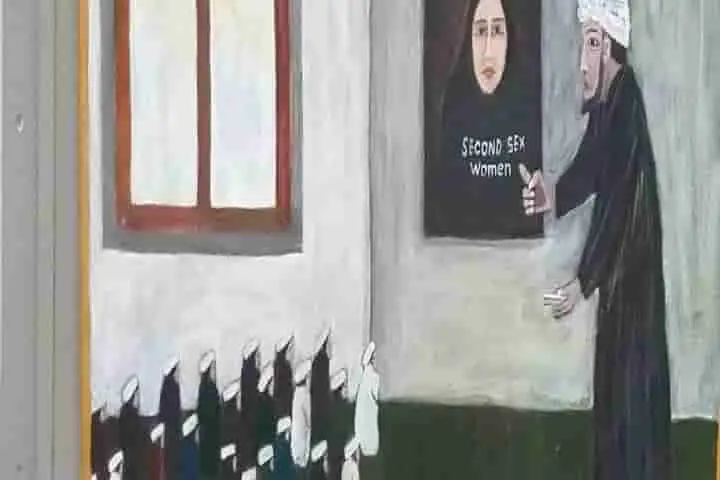Going through hardships, as an artist Murad Sharifi has not lost his artistic touch and sensitivity to the issue of gender parity. As a refugee from Afghanistan, he earns his living by working in a kabab place while living in a home for the homeless located in Budapest’s outskirts yet his small room is filled with dozens of paintings reflecting the plight of women in his country.
All the women don black burqas and are surrounded by men who are hostile.
He fled his country in 2015 along with several thousands to Hungary but the concern for his countrymen remains in his heart. He feels that it is a “obligation” to show the plight and oppression the women face in the nation, taken over by the Taliban.
In his words, his artworks are created “to express women’s pain, and my own feelings" as he sits in his room surrounded with canvases.
Also read: Pioneer of Kabul Murals Saddened after Taliban whitewashed his artwork
Most of the works give the picture of the harsh and stark reality of Afghanistan. For example, one illustrating the oppression the women face shows a female figure in a meat grinder with a bearded man squeezing her neck and pushing her down.
Likewise, another one portrays a woman with long hair with men queuing up while eyeing her suspiciously. Talking to Reuters, he said: “In a country where men rule over women, women are deprived of their right to speak freely.”
Not all his works are sad as some reflect joy too like the one showing couples among trees.
The artist hails from the Hazara community and is a Shi’ite Muslim, who are repressed by the Taliban, who are Sunnis.
Sharifi’s paintings are part of an exhibition which has works by three other refugees too.
Also read: Fear, anguish and a sense of betrayal looms over artists of Afghanistan
According to Marta Pardavi, who co-chairs the Helsinki Committee, which is a non-government organisation which helped in putting the exhibition together, paintings help the refugees deal with their traumas and also have a “therapeutic" influence on the viewing public. She said: “Because this artwork can convey the traumas, and can make them far more understandable.”
Ever since the Taliban has started ruling Afghanistan, women are confined into their four walls, and have been forced to quit work and education.




















